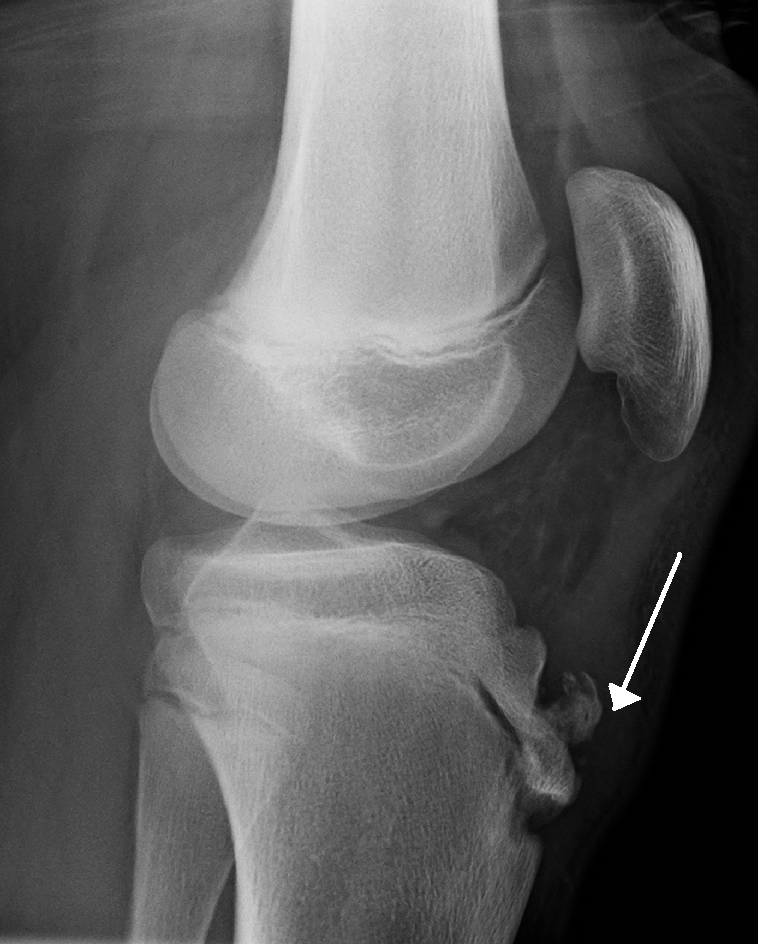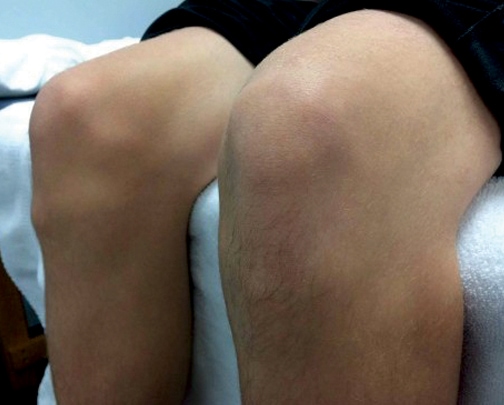Here at Physio Performance we see a large number of highly active teenagers, some of whom suffer from gradually worsening knee pain. A common cause of knee pain in young athletes is Osgood Schlatter’s disease.
Osgood Schlatter’s disease, or tibial tuberosity apophysitis, is a condition seen in young active teenagers in which the tibial tuberosity becomes inflamed, leading to worsening knee pain. It is usually non-traumatic in origin and can worsen quite quickly. This usually leads to the patient being unable to exercise due to pain levels.
Causes/Development
Osgood Schlatter’s disease develops at the tibial tuberosity, just below the front of the knee. At this point the patellar tendon attaches to the tibia, where an epiphyseal, or growth plate, is also located. The disease develops as a result of repetitive microtrauma at this point, usually as a result of the patellar tendon pulling on the bone during repeated exercise.
During a growth spurt the bone will develop quicker than the surrounding muscles, meaning the quadriceps can become shorter compared to the longer bones. This places stress on the tibial tuberosity during exercise, when rapid and repeated contractions of the quadriceps cause the patellar tendon to pull on the tuberosity, leading to inflammation and pain.
The disease usually causes some excess bone growth around the tibial tuberosity in response to the stress, and patients who previously suffered with the condition will have a slightly enlarged tuberosity on one, or both tibia.
Treatment/Management
The disease usually develops in very active young teens, and similarly to patellar tendinopathy, is predominantly a load issue. The first step in the process is to reduce the patient’s load in order to manage pain and allow for a reduction in the inflammation around the tuberosity.
While load has been reduced it is important for the patient to undergo some mobility and strength work. This is to achieve some additional length through the quadriceps muscles, in order to limit the pulling of the patellar tendon on the tibial tuberosity during exercise. It is also important to note that this disease is self-limiting, which means that it will usually run its course and have no long lasting detrimental effects.
As the condition is usually seen during times of bone growth, the body takes time to adapt, and once this adaptation occurs, usually in the form of growth and lengthening of the quadriceps muscles, the symptoms will begin to subside.
Return to Sport
Once the patient symptoms have begun to decrease, and they have undergone a strength and stretching programme, a return to play process can then begin.
As the patient returns to their sport, a gradual return to play plan can be put in place in order to slowly allow the patient to adapt to the intensity and demands of their sport. During this return to play phase flare ups of pain may be seen, and it is important to note that this is natural, with the body taking time to adapt to the return to high intensity, regular exercise.
The Physio Performance Way:
We are the specialists here in the Drogheda area dealing with Osgood Schlatter’s disease.
We can guide you right through the whole journey: From initial diagnosis to a full recovery.
A rehabilitation program will be customised for you to help you regain the motion in your knee and help you build a more confident and stronger knee.
Next step:
Want to get in touch with our team ?
Looking for some advice?
We’d Love to Help!!
You can contact us on 041-9877059 or at info@physioperformance.ie. You can also book an appointment online with us HERE.



